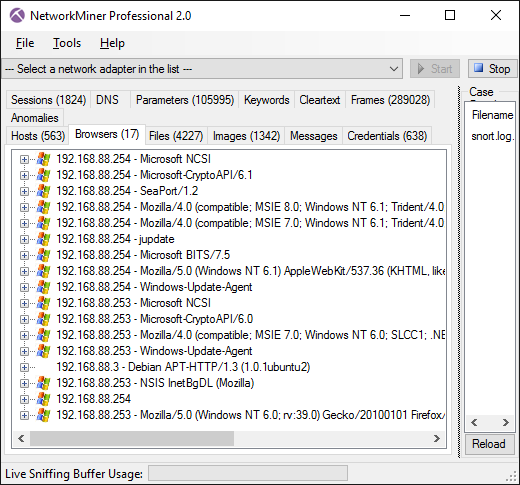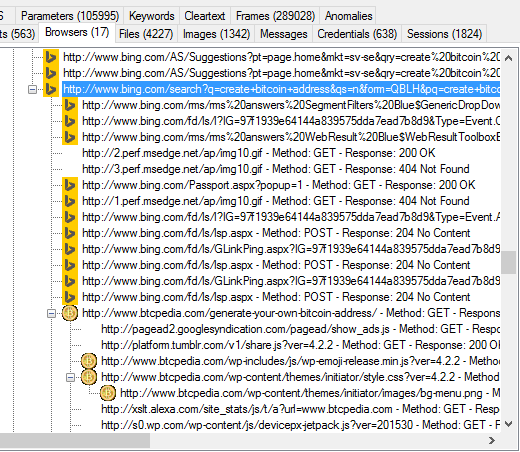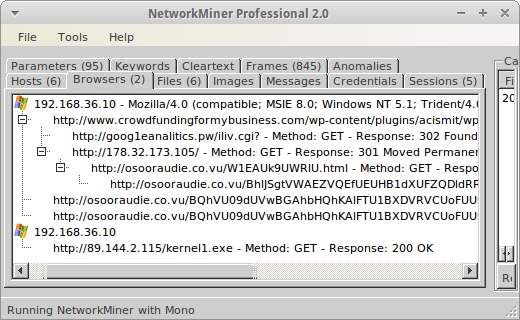Analyzing Web Browsing Activity

One of the features included in the newly released version 2.0 of NetworkMiner Professional is a new tab called “Browsers”. This tab shows web browsing requests and reponses in a hierarchical tree view, with the identified web browsers as root nodes.
The idea of tracking browser activity this way was suggested to me by Steffen Thorkildsen way back in 2009. I'm therefore happy to finally have this feature implemented in NetworkMiner!
At first glance, the Browser tab looks somewhat like the Hosts tab. One difference is that there can be multiple browsers per host, since each unique HTTP User-Agent is considered a separate browser.

The web pages (URLs) visited by a browser can be analyzed by expanding the node of that browser. The URLs are organized in a hierarchical structure, so that all URLs visited by clicking a link on a web page are placed under the node of that web page. This enables the analyst to see how a user ended up at a particular URL. NetworkMiner primarily uses the HTTP referer header (the misspelling of referrer stems back to RFC1945) to backtrack the pages visited before landing at a particular page.

Image: Bing search for “create bitcoin address” that led the user to www.btcpedia.com
The browser tree view also shows HTTP redirects, such as “302 Found” and “301 moved permanently”. These redirects can be used in order to see encrypted HTTPS URLs that a user is redirected to, for example when logging in at a website.

Image: Microsoft responding with a “302 Moved Temporarily" redirect
The icons that show up at some web servers are favicon images that have been passively extracted from the analyzed PCAP file.
Image: Website icons extracted from favicon.ico downloads
We hope the Browser tab can be of help in criminal investigations in order to show whether or not a suspect visited a particular website intentionally. This feature can also be used to track the activity of malware that uses HTTP for command-and-control (C2) as well as to analyze redirect chains used for malware downloads.

Image: PCAP file containing a redirect chain leading to malware downloads
The PCAP file loaded in the screenshot above originally comes from malware-traffic-analysis.net. Note that our analysis was done by running NetworkMiner in Linux to prevent accidental malware infection. The events shown in NetworkMiner's browser tab matches the description of the redirect chain provided at malware-traffic-analysis.net:
162.144.66.10 port 80 - www.crowdfundingformybusiness.com - Compromised website
185.14.30.37 port 80 - goog1eanalitics.pw - First redirect
178.32.173.105 port 80 - 178.32.173.105 - Second redirect
46.101.59.201 port 80 - osooraudie.co.vu - Nuclear EK
The redirect chain leads to a Nuclear Exploit Kit (SWF file with MD5 695a07cbcac3ca64010e168fe495ff4a, VirusTotal). Later on the Nuclear EK retrieves the file “kernel1.exe”, which seems to be related to the Kelihos botnet.
Posted by Erik Hjelmvik on Thursday, 18 February 2016 13:37:00 (UTC/GMT)
Tags: #NetworkMiner #NetworkMiner Professional #HTTP #browser #favicon #redirect #malware #NSM #PCAP



